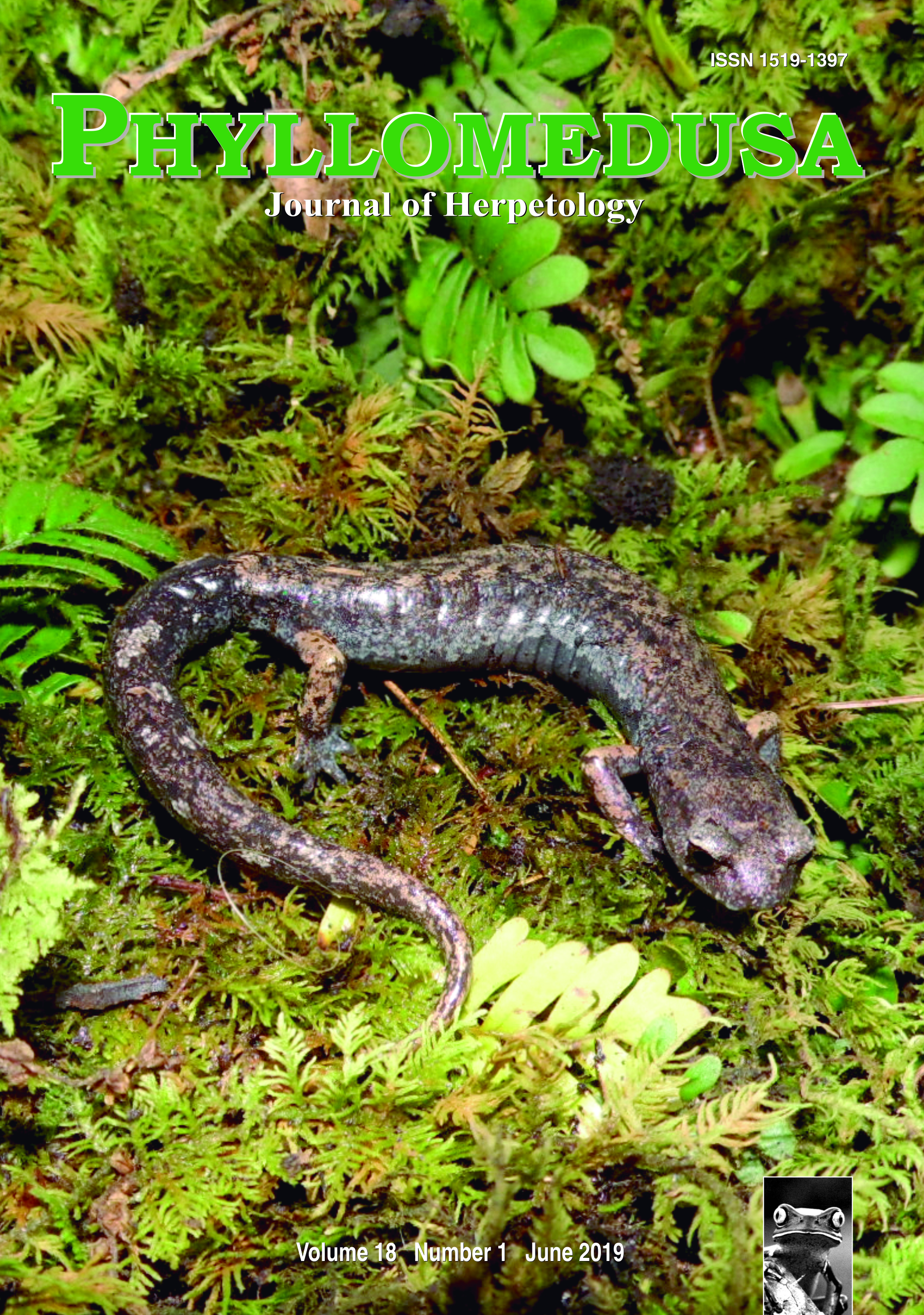Stable individual variation in ventral spotting patterns in Phyllomedusa trinitatis (Anura: Phyllomedusidae) and other Phyllomedusa species: a minimally invasive method for recognizing individuals
DOI:
https://doi.org/10.11606/issn.2316-9079.v18i1p13-26Keywords:
individual recognition, Trinidad Leaf Frogs, ventral patternsAbstract
Stable individual variation in ventral spotting patterns in Phyllomedusa trinitatis (Anura: Phyllomedusidae) and other Phyllomedusa species: a minimally invasive method for recognizing individuals. We describe a distinctive pattern of individually variable white ‘islands’ and dots on the ventral surfaces of the throat and forearm regions of male and female Phyllomedusa trinitatis. Crucially, we report from captive-reared individuals that these patterns are ontogenetically stable. We have used these patterns to recognize individual frogs in populations of 60 and more. Examination of the ventral surfaces of other Phyllomedusa species in museum specimens and from published accounts suggests that use of these patterns provides a generally useful, minimally invasive recognition method in this genus. We fnd that species previously classed as Phyllomedusa but now regarded as belonging to different genera lack these patterns.



 Impact Factor (JCR): 0.400
Impact Factor (JCR): 0.400 CiteScore: 1.0
CiteScore: 1.0